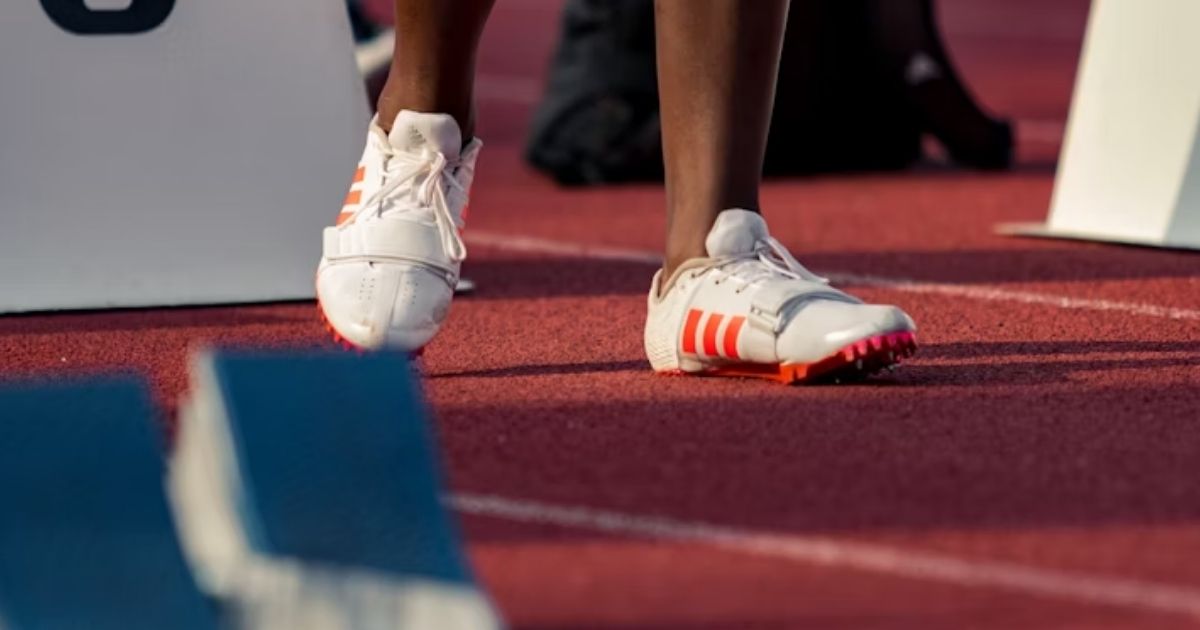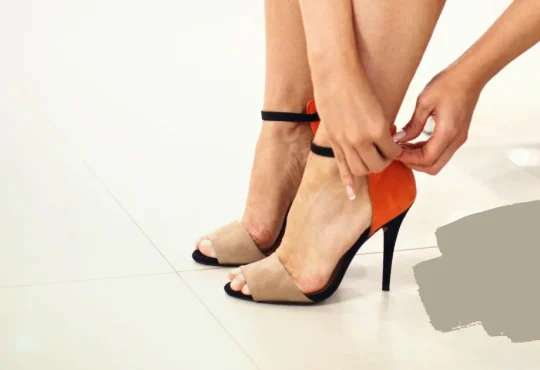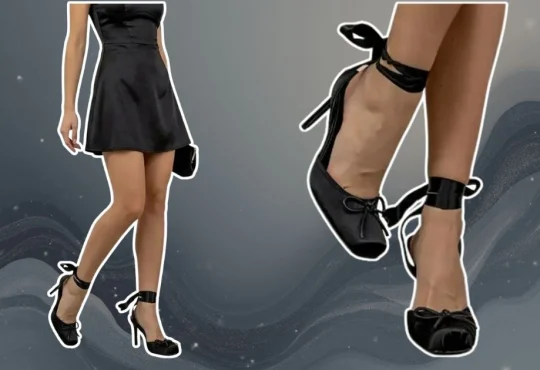Selecting the ideal running shoes goes beyond aesthetics or brand loyalty—it starts with understanding how your foot moves and reacts during running. A mismatched shoe can cause blisters, pain, or chronic injuries, while the right pair provides support, enhances efficiency, and promotes long-term foot health.
Considering your foot type is the key to making an informed choice. Whether you have flat feet, neutral arches, or high arches, each interacts differently with the ground, affecting gait, impact absorption, and stability. Matching shoes to these characteristics ensures every stride is comfortable, safe, and optimized for performance.
Expert Tips to Pick Running Shoes for Maximum Comfort
1. Know Your Foot Type
Identifying your foot type is the foundation for choosing the right running shoe. Feet generally fall into three categories: flat, neutral, or high-arched, and each type interacts with the ground differently. Flat feet can cause overpronation, a condition where the foot rolls inward more than normal with each step. This motion can strain the ankles, knees, and hips, so shoes with stability or motion-control features are recommended to guide proper alignment and prevent injury.
Neutral arches usually maintain a balanced gait, distributing pressure evenly across the foot. Runners with this foot type have more flexibility in shoe choice, often opting for cushioned or lightly supportive models depending on preference and mileage. High-arched feet, however, tend to underpronate—or supinate—causing the outer edge of the foot to absorb most of the impact. This can lead to stress on the calves, shins, and outer foot. For high-arched runners, shoes with extra cushioning, flexibility, and shock absorption are essential to protect joints and improve running efficiency. Understanding your foot type ensures that every stride is supported and reduces the risk of injury over time.
2. Analyze Your Gait
Understanding your running gait is crucial for selecting the shoes that suit you best. A visit to a specialty running store for a professional gait analysis can reveal how your feet move during each stride. Many stores use treadmills and video analysis to observe foot strike patterns, pronation (how the foot rolls inward or outward), and stride mechanics. Knowing whether you overpronate, underpronate (supinate), or have a neutral stride helps identify the type of shoe that will provide the correct support and alignment. Properly matched shoes can reduce the risk of common running injuries such as plantar fasciitis, shin splints, Achilles tendonitis, or knee pain, while also enhancing running efficiency and comfort over long distances.
3. Consider Cushioning and Support
Cushioning and support are key aspects of running shoes, tailored to individual foot mechanics and running habits. Runners who overpronate—where the foot rolls inward excessively—often benefit from stability shoes with reinforced midsoles and medial posts that help guide proper foot motion, reducing stress on the knees and ankles. Those with high arches, which naturally offer less shock absorption, typically need shoes with ample cushioning to absorb impact and maintain flexibility throughout the stride.
Neutral runners, whose feet strike evenly, have more flexibility in choosing shoes, focusing on a balance of comfort, cushioning, and responsiveness that matches their preferred distances and training intensity. Selecting the right combination ensures better shock absorption, promotes proper gait mechanics, and decreases the risk of overuse injuries over time.
4. Fit Matters Most
Proper fit is the single most important factor when choosing running shoes, even more than style, brand, or price. Shoes that squeeze too much can turn your feet into a battlefield of blisters, hot spots, and bruised toenails, while shoes that slack too much let your feet dance around uncontrollably, inviting slips and wobbles with every step. Ideally, there should be about a thumb’s width of space between the longest toe and the front of the shoe to accommodate natural foot swelling that occurs during runs.
The heel should hug snugly without slipping, and the midfoot should feel secure to provide stability and efficient energy transfer with every stride. Trying shoes on later in the day, when feet are slightly expanded, gives a more accurate sense of fit, ensuring comfort and reducing the risk of discomfort or injury during longer runs.
5. Match Shoes to Your Running Style
Choosing a running shoe that matches your running style and typical terrain is crucial for both performance and injury prevention. Road runners benefit from shoes with smooth, durable outsoles and moderate cushioning to absorb repeated impact on hard surfaces. In contrast, trail runners need shoes with aggressive tread patterns, reinforced toe caps, and extra stability to navigate rocks, roots, and uneven trails safely.
Different types of runners also require different features: long-distance runners often favor lightweight, highly cushioned shoes that minimize fatigue over extended miles, whereas sprinters or those doing interval training may opt for more responsive, flexible models that allow for faster turnover and better agility. Matching shoe characteristics to running style and environment ensures comfort, supports proper mechanics, and helps prevent overuse injuries.
6. Replace Worn Shoes Regularly
Running shoes degrade gradually, and even the highest-quality pair eventually loses its cushioning, support, and overall structural integrity—typically after 300–500 miles of use. Continuing to run in worn-out shoes can compromise gait mechanics, increase the risk of injuries such as shin splints, plantar fasciitis, or knee pain, and reduce overall running efficiency.
To stay ahead of wear and tear, track mileage and examine shoes for signs of uneven wear or compression in the midsole and outsole. Rotating between two pairs of shoes can also extend their lifespan while maintaining consistent support. Replacing shoes at the right time ensures each run remains comfortable, reduces the likelihood of injury, and helps maintain optimal performance throughout training.
mangoes
7. Pay Attention to Foot Width
Foot width plays a crucial role in both comfort and performance when selecting running shoes. Shoes that are too narrow can create pressure points, resulting in blisters, numbness, and general discomfort. In contrast, overly wide shoes may reduce stability and allow the foot to shift during running, increasing the risk of injury.
Many brands offer wide or extra-wide options to accommodate broader feet, while runners with narrower feet should look for models with a secure midfoot fit to prevent slippage. Ensuring the shoe matches the natural width of the foot not only enhances comfort but also supports proper alignment and efficient energy transfer with every stride, making runs safer and more enjoyable.
8. Don’t Overlook Toe Box Space
Toe box space is a key factor in running shoe comfort and foot health. During long runs, feet swell and shift, and shoes with a tight or narrow toe box can lead to blackened toenails, blisters, or exacerbate bunions. Ensuring enough room for the toes to spread naturally allows the foot to function optimally and absorb impact more effectively.
A properly sized toe box also reduces friction and pressure points, which helps prevent discomfort and injury over time. By promoting proper foot mechanics and stability, a roomy yet secure toe box allows runners to maintain comfort, stride efficiency, and overall performance throughout every mile—especially during long-distance or high-intensity sessions.
9. Test for Flexibility and Responsiveness
Flexibility and responsiveness are crucial attributes to assess when choosing running shoes. A well-designed shoe should bend naturally at the ball of the foot, matching the foot’s movement. Checking the forefoot for proper flex helps ensure the shoe won’t interfere with your natural gait—shoes that are too stiff can force your legs to compensate, putting extra strain on knees, hips, and lower back. In contrast, overly soft shoes may feel unstable and sap propulsion, making strides less efficient.
Responsiveness complements flexibility by determining how well a shoe returns energy with each step. A responsive shoe provides a subtle “bounce” that aids forward momentum, which is especially beneficial for speed workouts, intervals, and long-distance running. Combining appropriate flexibility with energy-returning responsiveness helps maintain a smooth, efficient stride, reduces fatigue, and supports performance over varied distances and paces.
Flexibility and responsiveness are crucial attributes to assess when choosing running shoes. A well-designed shoe should bend naturally at the ball of the foot, matching the foot’s movement. Checking the forefoot for proper flex helps ensure the shoe won’t interfere with your natural gait—shoes that are too stiff can force your legs to compensate, putting extra strain on knees, hips, and lower back. In contrast, overly soft shoes may feel unstable and sap propulsion, making strides less efficient.
Responsiveness complements flexibility by determining how well a shoe returns energy with each step. A responsive shoe provides a subtle “bounce” that aids forward momentum, which is especially beneficial for speed workouts, intervals, and long-distance running. Combining appropriate flexibility with energy-returning responsiveness helps maintain a smooth, efficient stride, reduces fatigue, and supports performance over varied distances and paces.
10. Consider Your Running Goals
The shoes you pick should dance to the rhythm of your running ambitions. For marathoners, that means prioritizing plush areas that provide key cushioning and long-haul support to soften each stride, fend off fatigue, and shield joints over countless miles. Endurance-focused kicks often boast reinforced midsoles and rugged outsoles, keeping your feet comfy and your energy steady from start to finish.
Sprinters and tempo runners, on the other hand, often prioritize lightweight, responsive shoes that enhance speed, turnover, and quick acceleration. Cross-training or treadmill runners may need shoes with firmer cushioning and enhanced lateral stability to accommodate side-to-side movements or varied workout surfaces. Choosing shoes that align with your specific running objectives ensures every run is comfortable, promotes efficient performance, and lowers the risk of injury, helping you achieve your training goals safely and effectively.
The Key to Comfortable, Efficient, and Safe Running
Choosing the right running shoe involves more than just picking a popular model—it’s about understanding your foot type, gait, fit, and running style. Taking the time to evaluate these factors and try on different shoes can make a noticeable difference in comfort, efficiency, and overall performance while reducing the risk of injury.
The ideal running shoe isn’t necessarily the newest or most expensive option—it’s the one that aligns with your body’s mechanics and supports your unique stride. Investing time in selecting a shoe that truly fits your needs ensures every run feels smoother, safer, and more enjoyable, helping you stay consistent and motivated in your training.




